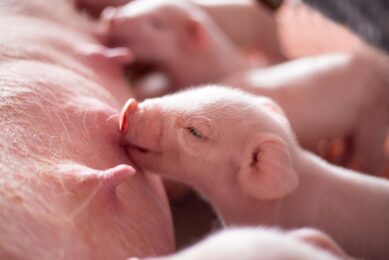Research: Understanding variation between pigs
The variable weight of pigs creates a major challenge for pig producers and research continues to investigate ways to both reduce and manage this variation.
At the Agri-Food and Biosciences Institute (AFBI), Hillsborough, pigs have been weighed individually for many years and as such a very large set of data has been compiled.©With funding from Devenish Nutrition Ltd, it was possible to interrogate this data set with the aim of achieving a better understanding of factors that could reduce the variable weight of pigs.©
©
Two key areas which were looked at included the initial weight range of pigs in the pen and the birth weight of pigs.
©
1) Weight range within a pen
Grouping pigs in uniform weight or mixed weight groups at the start of the weaning or finishing period has been investigated in a number of studies but results have not always been the same.©Over the last number of years, pigs on the AFBI Hillsborough herd have been penned in groups which represent a range of ‘variation’.©For example, at weaning, in some pens the weight of all pigs were within a 2 kg range whilst in other pens the weight of pigs spanned an 8 kg range.©
©
In total 391 pens of post weaned pigs were examined.©It was found that when the initial weight range within the group was very low (under approximately 3kg), by the time pigs were approximately 30 kg and ready to move to finishing accommodation, the range in weights within the pen increased to a greater degree than if the weight of pigs in the group had initially spanned a large weight range (over approximately 5kg).©Other researchers have found similar results and have suggested that if a degree of variation in weight within a pen of pigs is not present when pigs are initially grouped, it will develop over time.©This suggests that placing pigs of similar weight within a pen at weaning will not reduce the variable weight of pigs within that pen when they are due to be transferred to the finishing accommodation.©The current study would suggest that at least a 5 kg spread in weight of pigs in the pen at weaning is needed to minimise the expansion in weight range by the time pigs are ready for transfer.
©
In contrast, when results were examined relating to the finishing period it appeared that if finishing pigs of similar weight are grouped together, i.e. uniformly grouped, by the time the pigs are ready for slaughter the spread of weight within these groups will have remained fairly similar and the ‘heavy’ group will be ready one week with ‘medium’ and ‘light’ weight groups being ready in subsequent weeks.©This aids the management of housing since producers can clear whole pens at once.©©©©©©©©©
©
2) The birth weight of pigs
In the AFBI data set the birth and wean weights of 13,158 pigs from 1,344 sows across 96 farrowings (January 2003 to April 2008) were examined.©All pigs were weaned at 28 days of age (+/- 2 days) and managed similarly between birth and weaning.©As expected, as birth weight increased, so did wean weight.©In addition, the wean weight of pigs with low birth weight (under 1kg) was found to be more variable than that of pigs with a birth weight over 1 kg and as birth weight increased to 2 kg variation in wean weight continued to decrease.©Table 1 reports the probability of pigs being over 7 kg at weaning when born at a range of birth weights.©It was interesting to find that 28% of the pigs born under 1 kg had a wean weight over 8kg and 12% of them had a wean weight over 9 kg (Table 1).©
©
©
©
Table 1. ©Percentage of pigs over 7.0, 8.0, 8.5 or 9.0 kg when born at different birth weights
© | Weight at weaning: | |||
Weight at birth: | Over 7.0kg | Over 8.0kg | Over 8.5kg | Over 9.0kg |
Under 1kg | 53% | 28 % | 18 % | 12 % |
1.0 – 1.5kg | 84% | 64 % | 51 % | 37 % |
1.5 – 2.0kg | 94% | 86 % | 76 % | 66 % |
Over 2kg | 99% | 94 % | 90 % | 85 % |
©
©
These statistics challenge the perception that a runt pig is always a runt pig.©Within this study, light weight pigs would not have been given special attention and it is unknown why 28% of these light birth weight pigs performed so well.©However, the data demonstrate that some light weight pigs at birth have the potential to grow well pre – weaning and can achieve acceptable weaning weights.©It is planned that future work will focus on identifying the reasons why these light weight pigs performed well and if more light weight pigs could be managed to achieve better weaning weights economically.©©©
©
[By Elizabeth Magowan, AFBI Hillsborough]
©











